
|   |

|   |
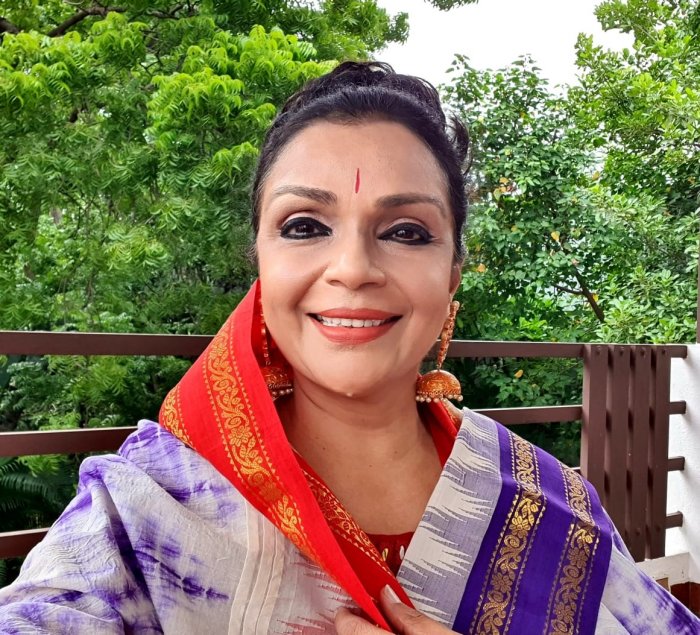 October 2020 Sometimes I open the window And the dusk rain touches my face, A lightness on the edges of knowing That when this frozen summer fails, children locked Without knowledge of tomorrow's light Will leap as the sun breaks, molten though their corridors Night fleeing rapidly from their eyes - While mothers and fathers hurtling with the hurricane Will struggle To stand still, struggle to let go the darkness... - BEYOND THE NIGHT by Anu Majumdar, Auroville I begin with the piercing beauty of words from my friend and take the liberty of slicing her luminous poem into two parts - to envelop this mostly "non joyous" missive with her ray of hope. Like gentle arms that holds a troubled soul close. The second part will appear at the end of this writing. Anu's poems are written to lead marks of light in the darkness we travel, a tunnel to carry us to the other side. Month #7 is here. India is unveiling its plans for UN-LOCKDOWN #5.0 ..and we have less than 100 days for the end of 2020. But... but... we have at least another 6 months of this "same-ness" staring at us. More masks, more cautious stepping out (if at all), more waiting, more cancellation of plans, performances and tours. more rising tempers and frayed nerves, more lost jobs, more bankruptcies, more lives lost, more families destroyed, more artistes displaced, more lost friendships, more frayed nerves.. more... more... more... more... of less and less and less. I am often called a "belligerent optimist" - someone who tries to plough through tough times, trying to find opportunity and impetus from dead ends. In fact, the media has been watching and reporting about all the many online initiatives that I have kick started since the lockdown in March. But even I cannot believe my own words and thoughts any more. They seem like strangers - motivational words and images that I have trained myself to focus on when things fall apart now - seem alien and unreal. I see alphabets as broken shards of familiar patterns that are not falling into place. Sounds and images seem fuzzy and garbled. The loss of one too many lives close to me have also been a major factor for this sense of desolation. The reality show which was the first Presidential debate in the USA delivered the daily dose of “adbhuta rasa” tragi-comedy. But the sheer savagery of the recent death of a young Dalit girl in Uttar Pradesh does little to alleviate this increasing sense of dim sorrow. But one pushes through. Day after day. One step in front of the other. Keep going. #ZOOM-BHA & BEYOND 6 months after the numbing lockdown, artistes have slowly started recording their presentations. Hiring studios to film their dance and music presentations. Some are redoing their own dance and rehearsal spaces in their homes for a more camera friendly frame. The horrendous sights of the first 5 months has given way to more sophisticated webinars and talks. The challenge of good connectivity is still something we cannot take for granted in India and I have been at the receiving end of such fluctuations that throws off the best planned talk sessions or video streaming. However, monetisation of this improved content is yet to be grappled with. ZOOM is the clear winner, in spite of sudden and disruptive "raids" by trained hackers waving hostile country flags and showing pictures of dead animals! Yes, this actually happened to dancer Geeta Chandran's recent online performance. What a frightening prospect to have planned a presentation so carefully and then to have it rudely sabotaged! All the other online formats like Google Meets, Air Meet and several others who claim much tighter security standards are left way behind in the "user friendly" category. I have tried them all and yes, ZOOM is the easiest to navigate. Security however, is a growing concern. #ALL EYES ON YOU 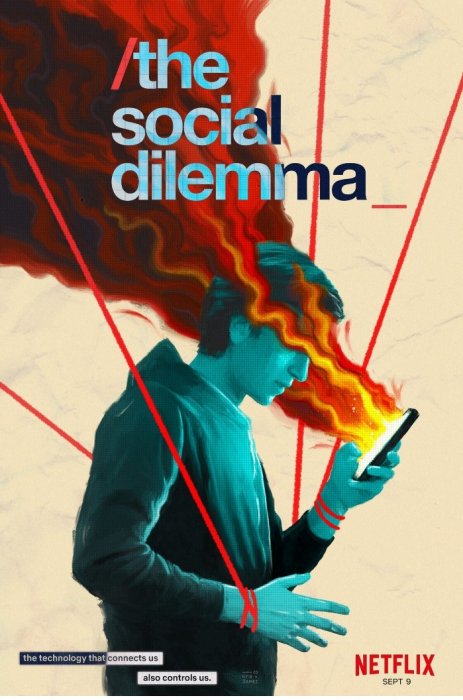 If any of you have watched the recent documentary on NETFLIX called THE SOCIAL DILEMMA, be prepared to be really disturbed. From the statements of former employees of Facebook, Uber, Twitter, Instagram and Google, you will come to know how our minds, tastes and world views are actually being manipulated, nudged and guided to shift ever so subtly - that you will not even recognize it. The reality of a super computer which is left unmanned somewhere in Silicon Valley, calibrating your every "like", how many seconds you spend on a particular image, your past loves and break ups, your holidays with besties and other life defining moments - are all being recorded. I watched SOCIAL DILEMMA with growing horror and sadness that our world has certainly been taken over by a small group of less than 200 programmers, between the ages of 21 and 30, who have the power to create enormous wealth, start wars, hack elections, spur hatred, influence politics, divide families and friends and ravage our minds with fake news. And to think that when Facebook started in 2004, it brought families and lost friends together and helped find organ donors for sick people! I watch as classical dance and music continue to fill air time unabated and there is not much to comment upon except issues that exploded OUTSIDE the rehearsal rooms. While thousands of performers continued to upload videos of themselves against various backgrounds and visual frames, I discovered some very interesting conversations around Dance and the Live Arts that caught my attention. #CORONA THEATRE CONTAGION - an 8 weekend initiative by Pickle Factory/Vikram Iyengar and colleagues - delves deeper into the very act of congregation. What does gathering mean in the present time? Can the manic loyalty of sports fans who adore Federer, Nadal, Messi and Kohli be translated to an auditorium and to ‘Rasikas' who love the arts? My son, a crazed Liverpool football fan, was ecstatic when his team won after years of being in the "could not cross the finish line" category! What is the infectious air of sports that cuts a swathe through every class and brings strangers together just by virtue of being supporters of the same team? (Malavika Bannerjee - Director, GAME PLAN) What is the magic when weeks and months of rehearsal translate into the moment when the actor steps onto the stage and encounters the warmth of the human body in seats and the seeing eye ready to watch and absorb? (Ratna Pathak Shah- actor) Today we have the camera's eye - cold, glassy, unmoving. The ultimate mediator between bristling human emotions, blood and tissue - and the audience. We have stepped onto, as one speaker Nina Tecklenberg from Berlin, described our current condition - CORONA THEATRE. The present scenario of the pandemic having halted the arts around the world needs a careful rethink. Of creating new content that can be delivered effectively onto our hand held devices - as carefully constructed as the live performance itself. It is one thing to talk about CONTENT but what about the audience? Who is watching and how are they watching? Are they walking around in the house, placing their devices on the counter or the dining table while cooking, eating or looking at another device? What is the attention span? Why would a tired and dispirited world want to watch yet another classical dancer or musician performing the same thing again and again? Listening to acclaimed theatre director Neelam Mansingh on another platform (THE CREATIVE ARTS ACADEMY- Ramanjeet Kaur) I agreed with her lament. Neelam was unapologetic about the struggles of creating a mono actor piece called BLACK BOX for Arundhati Nag's RANGA SHANKARA in Bengaluru. She spoke about her continuing awkwardness with technology, the vital assistance from her son Kabir who will shoot and edit the play BLACK BOX, and her refusal to accept this medium as a possible future. "I will not work like this, if it means that I have to stop working or creating", she said emphatically. Many must have nodded in agreement. #TOO MANY GOODBYES  Ruth BG Not one, not two but three major pillars of creativity, women's strength and personal passion were all felled in one week. It came as a triple whammy. I did not ever meet RBG, the ubiquitous US Supreme Court Justice, who fought for gender equality and against right wing fascism with wit and steely grit throughout her distinguished 27 year tenure. Here are some of her sparkling quotes to keep in mind. A gender line helps keeps women not on a pedestal, but in a cage. Fight for the things you care about. Do it in a way that will lead others to join you. Reacting in anger or annoyance will not advance one's ability to persuade 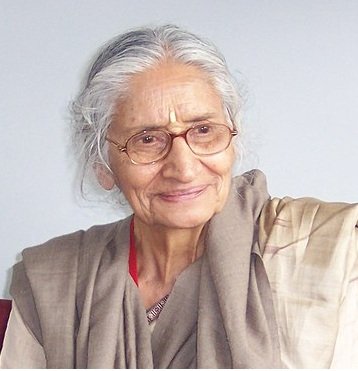 Kapila Vatsyayan I met and was blessed by the keen and unerring eye of KAPILA VATSYAYAN, the czarina of Indian culture, whose prophetic vision spotted Balasaraswati's genius and Pandit Birju Maharaj's talent. As a person who believed in the embodied and holistic vision of Indian performing and visual arts, Kapilaji's early encouragement for my nascent interest in academics came at a timely moment. She wrote a stunning foreword to my Masters Thesis that was published as a book NATYA BRAHMAN-the Theatric Universe (1979). It was a comparative study of the NATYA SASTRA and POETICS. Bharata and Aristotle's contrasting views on the performing arts. In the foreword, Kapilaji's words were, "Anita combines in herself the sensitivity of an artiste and the critical objectivity of a scholar. She represents the new generation of dancers and scholars who have emerged in the 1960s and 70s in modern India." That was a crucial moment of validation for me. It came on the heels of experiencing Jalabala Vaidya's iconic one actor play RAMAYANA on the idyllic seashores of Nassau, Bahamas in 1978. I had preceded the event with a short Mohiniattam presentation. Soon after her performance I approached the actor, mute with admiration. Jalabala turned to me and said, "Come back to India. You belong at home. On stage." To perform my research and to embed my studies and politics within performative frames was somehow determined by these two remarkable women. Kapilaji has gone. Jalabala Vaidya continues to inspire us. We share several tributes on Kapila Vatsyayan on our site. She did have her share of critics. Her presence and contribution to multi dimensional thinking about the many arts and its braiding within the Indian tradition remains unequalled. 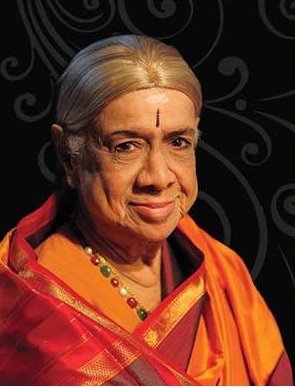 Rajee Narayan I was, certainly, most affected by the sudden passing of my first dance guru RAJEE NARAYAN. When the phone rang on the morning of September 25th, I was not prepared for this devastating news. However, having lost her only child - her 70 year old son Shyam - just 24 days earlier in Mumbai, I was certain that her broken heart could not bear the grief. At age 90, Rajee aunty led me by the finger into the joy of Bharatanatyam and dance. I started by sitting on her lap as a 2 year old and keeping "taalam" with her as she sang. As soon as I could walk, I was prancing about imitating her folk dance steps that she was teaching my aunts. A very close family friend from her Madurai days, Rajee Narayan was a versatile "vagyakara" - a composer, dancer, musician, writer, choreographer and teacher. In the vistas dominated by male gurus, Rajee Narayan was like a lone beacon in the 1950's and beyond. From conducting my arangetram when I was only 9 years old, encouraging me to go through the 2 and half hour performance with an injured back, teaching me short items from Kathak, Kuchipudi (the famous plate dance), Manipuri along with Kuratthi and my very first introduction to my now favorite Goddess ANDAL - her gentle smile was a constant companion. She was immensely proud of me, even when I doubted myself, bore her personal travails with great dignity and endeared herself to one and all. In Rajee Narayan's passing, I have felt that the last branch of shade from an Elder has been cut. I felt this pang of grief when Neila Sathyalingam passed away in Singapore. Both women were my cheerleaders. Strange, because I studied the longest with Guru Adyar K Lakshman, who had my enormous respect but not the close bonds I shared with my two female gurus. The only one left is Sudharani Raghupathy - who, at 76 - is a rock steady icon. And a fabulous mentor- whenever I need a patient ear to hear my doubts. #NAMING AND SHAMING My interview for the Tamil television AVATAR LIVE was broadcast a month ago to mostly positive responses. In it, I spoke about the initial criticism and reservations many critics and senior artistes had about my emerging style of NEO BHARATAM. In the conversation I said, "People asked is this dance or KOOTHU?" That statement was then taken as the promotional tag line for my interview. When the story appeared, I realised that I had unwittingly used the word KOOTHU as a pejorative which could suggest that the ritual theatrical form of THERUKOOTHU was inferior and "unsuitable" for urban tastes. That my still developing style of dance-theatre was being dismissed as "KOOTHU", something not to be taken as serious art. Of course I was only quoting how people were describing my style in the early 1990s. In a subsequent conversation with Hanne de Bruin, director of KATTAIKKUTTU SANGAM in Kanchipuram, she reiterated that this very same attitude and linguistic slur is what prevents so many young people from coming forward to learn the magnificent art of THERUKOOTHU. Incidentally, Hanne has turned to organic farming in their adjacent land and is finding creative ways to stay afloat during this time of pandemic. To think that Thirumangai Alwar in his sacred poems written in the 8th century CE in praise of Lord Vishnu, writes poetry known as MADAL pasurams. In this ancient Tamil Sangam practice, a jilted lover takes extreme measures to win back his beloved. Thirumangai Alwar refers to himself as a KOOTHADI - a senseless dancer, whirling and babbling endlessly; someone the society dismisses as "mad". The word KOOTHU has been embedded in Tamil as something that is undesirable. #METOO - the never ending "blind eye" of the Indian performing arts On September 2, an explosive post appeared on the Facebook page of the DHRUPAD FAMILY EUROPE. It was felt as a seismic shock about a revered, almost "sacred" family of 3 brothers. Musicians who have been feted, awarded, applauded and hailed across the globe. That two of these "guru" siblings behaved in a shocking and repulsive way with their foreign students had the dance and music circles all agog. On September 12th, musician couple Shubha Mudgal and Aneesh Pradhan issued a bold statement about the problematic situation and asked for an honest questioning and re-evaluation of the power dynamics between Guru and Sishya. On September 26th, a calm and measured analysis of this uneven power structure in the arts was given by political scientist and gender activist Swarna Rajagopalan, founder of PRAGNYA, Chennai. In a very well attended webinar, she laid out the various scenarios of sexual abuse and harassment. Sponsor and artiste. Sabha secretary and artiste. Guru/teacher and artiste. The arts are not exclusive to this imbalance of power but it is this very field that allows the abuser to hide behind the cover of "divine music", "genius talent" and "surrender before your guru" syndrome. Swarna also reminded the participants that the VISHAKA GUIDELINES, formulated by the Supreme Court of India in 1997, was created as a framework to protect women from sexual harassment in the workplace. When one participant raised the question of male artistes being at risk from their female or male gurus, the answer was to create one's own CODE OF CONDUCT within each dance and music organisation to prevent such repeated acts of sexual offences. The sad truth is that it takes a non Indian student to speak out. It does not seem to happen in India. The silence is both deafening and disturbing. Sexual predators are walking scot free and continue to prey on their female students, some even minors! With most in the community looking the other way and even the state cultural bodies unwilling to take any legal or stern action when proof is shown, it is a truly sorry state of affairs in the classical dance and music world. I did learn one important thing. Believe the victim. Do not doubt her/him. #GANDHI & HISTORY REKINDLED 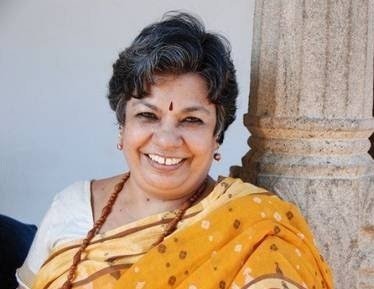 V.R. Devika If we dancers and musicians thought that we have been so busy during this pandemic, either teaching, performing or speaking on webinars, then we have to stop and think again. Leading up to October 2, the 150th birth anniversary of Mahatma Gandhi - the busiest people are the Gandhi experts. Chennai has its own Gandhi scholar V.R. Devika who is on 3 webinars a day! Whew! The one YouTube talk I heard about Cleanliness should be used in the current Swacch Bharat campaign. 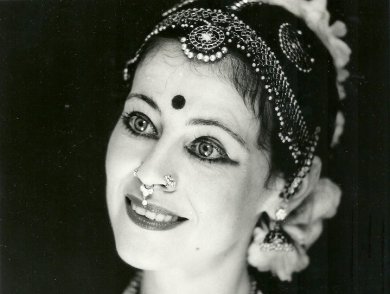 Dr. Saskia Kersenboom One positive to emerge from the heated arguments about caste and class in Bharatanatyam is the increased interest in dance history. Dr Saskia Kersenboom is enjoying a resurrection of a kind that she did not expect. In a recent created Facebook page called RE-COGNISING DANCE started by by Aranyani Bhargav and Mahalakshmi Prabhakar, nearly 100 people joined to listen to the Devadasi scholar talk about her seminal book NITHYA SUMANGALI. It was a most satisfying session and we can expect to see and listen to Dr Kersenboom a lot more in the coming months. #WRITING DANCING Why is it that writing about dance is such a permanent fixture while dance is so evanescent and ephemeral. Yet, dance writing and criticism does not get the same attention and respect that performing does. Kolkata based arts writer Kathakali Jana conducted a successful writing workshop in which 12 eager students watched world dance clips and learned how to watch, process and articulate the dancing body. This is a crucial aspect that we in India have to develop along with dance scholarship. Getting on stage will become a very lonely endeavour if we do not build the eco system around ourselves. I use the example of the recently concluded PRAKRITI festival produced by CFAA - Colorado Fine Arts Association. The long list of diverse styles and presentations did not focus enough (my feelings exclusively) on the commentary that should follow such a festival. It is not enough to just keep the performances on YouTube for a certain period of time. Organizers are usually so consumed by the planning of the actual event and the managing of various egos, that there is a collective sigh of relief when it all ends smoothly. And CFAA is completely managed by volunteers who are all highly placed professionals. How does such a festival help the classical arts around the world? How do the diaspora dancers compare with the India based renowned performers? Are the traditional dances relevant for audience today besides being a palliative? There are so many questions that events like these which seek to coax audiences to congregate can offer. I wish CFAA had also invited 3 young dance writers to watch and come up with a parallel blog of performances and interviews to accompany the event. The vast difference in approach was seen at the JOMBA festival in Durban, South Africa. Organized by activist and Artistic Director Lliane Loots, the festival's digital version was complemented by a beautiful e-magazine KHULUMA that was produced with several commissioned writers commenting on the various performances that were streamed. Just reading the wide variety of dance criticism was an eye opener. This kind of investment in inviting writers to watch the various performances online from their homes across the world and send in thoughtful observations is what can make these online dance and theatre events seem less ephemeral and placed more in context with our current world. #NEO NARTHAKI  Finally, we are thrilled with the response and the reception to our newest babe - NEO NARTHAKI. The memberships are coming in, viewership is gaining momentum. Millenials and Gen Z are connecting to the format and we have lots of exciting events planned. Thank you also for the warm reception to my first digital collaboration with cinematographer Sharan Devar Shankar in MOTHERLAND. The short film premiered at the CFAA festival on September 19 and replayed on the 20th. It was deleted immediately afterwards on my request and was then shown across several platforms. I also send continuing gratitude for the numerous comments for my various interviews and mentoring tips. When there is such an ocean of information out there, I often wonder, "is anyone watching?" #DURGA - AWAKE ARISE ALIGHT  We are in the month of the Goddess. It is the season for NAVARATRI but only COVID 19 is doing its own RAAS GARBA around all of us. The normally bustling season will be very quiet, although a rise in infections is predicted. I can only close by saying that safety and health is above all else. We have OUR October pages filled with daily updates of a new series called DEVI DIARIES. From Durga to Frida, Maya Angelou, Emily Dickinson and Rudrama Devi - dancers and singers are sending in their presentations of their favorite Goddess or real life SHERO. May your lives have that spark of grace that comes with seasons like these. I know that it is hard to lift oneself up from the descent into a dark place, but there IS a shaft of light that poet Anu Majumdar catches like a daffodil emerging from the concrete.... But some, biding time under the sun, watching the world turn, will make no bid to run - a sudden glory etching their eyes, a vast unspoken territory easing inside their hearts, free froth labyrinthine servitudes of death free at last to sing, to conquer the dungeon silence. to stand unwavering and unshaken till this darkness catches light. (Anu Majumdar) - Dr Anita R Ratnam Chennai... and venturing out once again... by road Twitter: @aratnam Facebook: Anita R Ratnam Instagram: @anitaratnam Blog: THE A LIST / anita-ratnam.blogspot.in Post your comments |